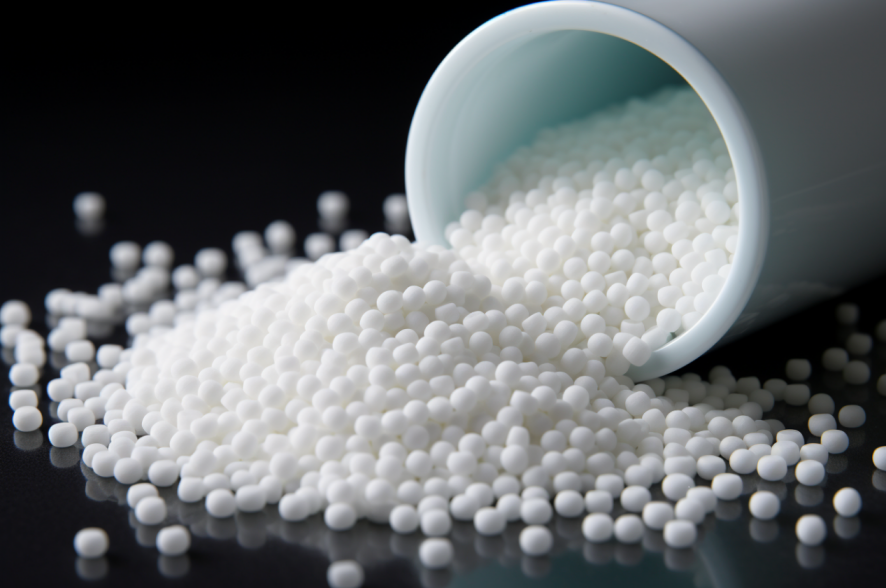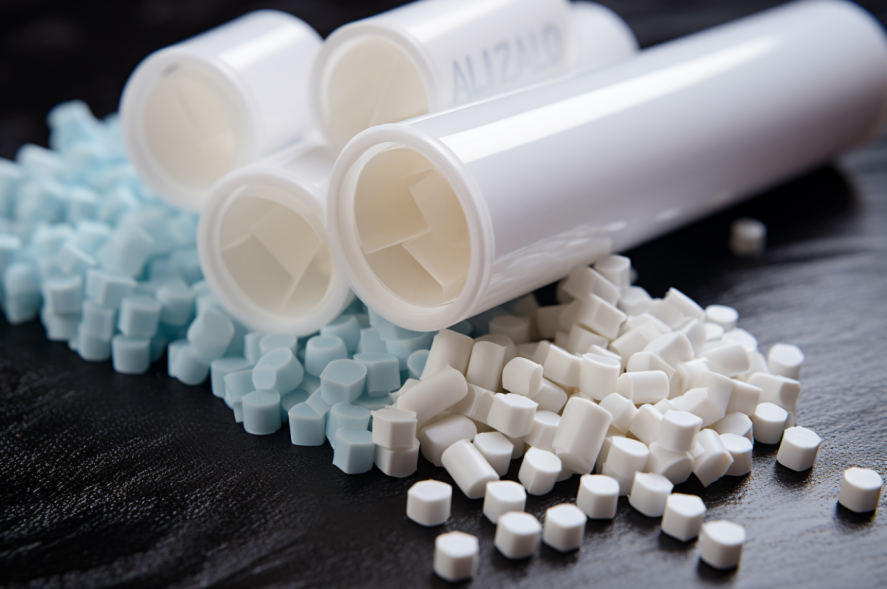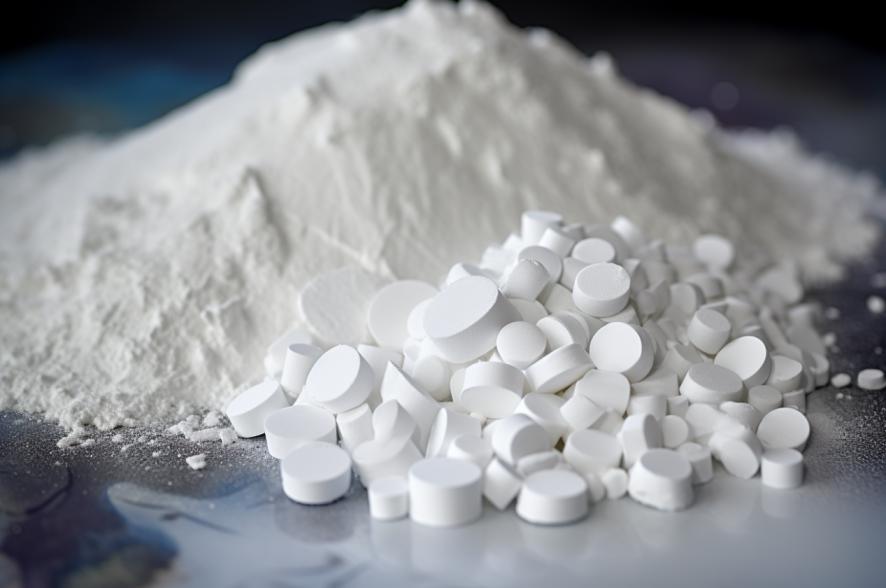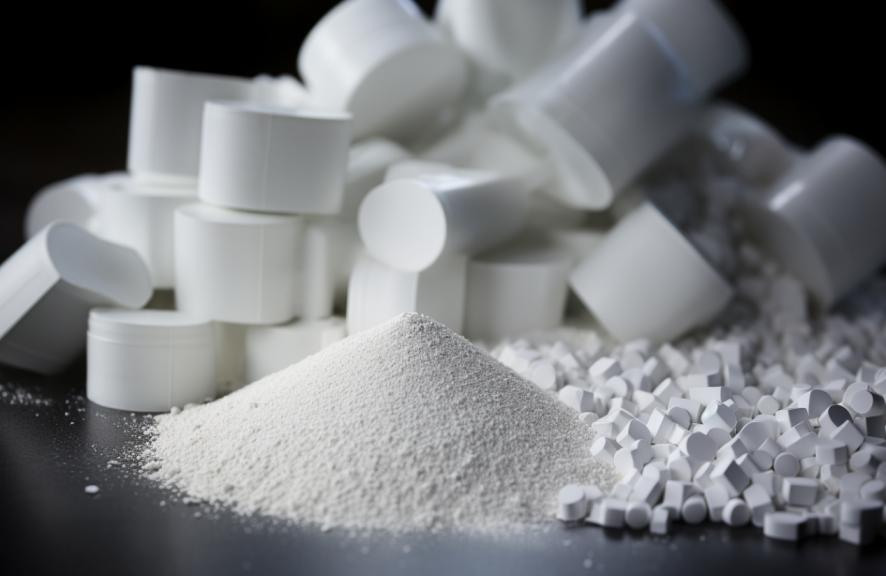Lead Stabilizer in PVC: Essential Additives for Enhanced Durability
08/07/2024
Lead stabilizer in PVC is crucial additives used in the production of polyvinyl chloride (PVC) to enhance its durability and performance. These stabilizers, typically composed of lead compounds such as tribasic lead sulfate, dibasic lead phosphite, and lead stearate, prevent the degradation of PVC when exposed to heat and ultraviolet (UV) radiation during both processing and its lifespan.

What is a Lead Stabilizer in PVC?
Lead Stabilizer in PVC is an indispensable additive used in the production of polyvinyl chloride (PVC) to significantly enhance its durability and overall performance. These stabilizers primarily consist of various lead compounds, including tribasic lead sulfate, dibasic lead phosphite, and lead stearate. Their main function is to prevent the degradation of PVC when exposed to heat and ultraviolet (UV) radiation during both the processing phase and throughout its entire lifespan. This protective measure ensures that the PVC remains stable, and flexible, and retains its physical properties under various environmental conditions.
The introduction of lead stabilizers into the PVC production process has revolutionized the material’s applications. By preventing the breakdown of PVC at high temperatures, these stabilizers allow for a broader range of uses, especially in environments where thermal stress is a concern. The addition of lead compounds not only improves the material’s stability but also extends its usability, making it a more versatile option for numerous industries.
Additionally, lead stabilizers offer critical UV protection, a key factor in the longevity of PVC products used in outdoor applications. By shielding the material from the harmful effects of UV rays, lead stabilizers help maintain the integrity and appearance of PVC products, ensuring they remain functional and aesthetically pleasing over time.
The Role of Lead Stabilizer in PVC
Lead Stabilizer in PVC plays a pivotal role in the manufacturing and longevity of PVC products. One of their primary functions is to provide heat stability, which prevents the PVC from breaking down or decolorizing at high temperatures during processing. This heat resistance is vital in applications where PVC is subjected to significant thermal stress, such as in industrial and construction settings. Without lead stabilizers, PVC would be prone to thermal degradation, leading to compromised material properties and a shorter lifespan.
Moreover, lead stabilizers enhance the UV resistance of PVC, which is crucial for products exposed to outdoor environments. UV radiation can cause PVC to degrade, resulting in discoloration, brittleness, and loss of mechanical properties. By incorporating lead stabilizers, manufacturers can produce PVC products that are more resistant to UV-induced damage, thereby extending their service life and maintaining their functionality in outdoor applications.
The effectiveness of lead stabilizers in maintaining the integrity of PVC makes them indispensable in various industries. In the construction industry, for instance, PVC pipes, window profiles, and roofing membranes benefit from the enhanced stability provided by lead stabilizers. Similarly, in the automotive industry, PVC components such as interior trims and protective coverings are made more durable through the use of these stabilizers. The electrical industry also relies on lead-stabilized PVC for insulation in wires and cables, where heat resistance and durability are paramount.
How Lead Stabilizers in PVC Solve Industrial Challenges
In the industrial sector, PVC faces several challenges, including exposure to high temperatures, harsh chemicals, and UV radiation. Lead stabilizers address these challenges by providing a range of benefits that enhance the performance and durability of PVC products.

Enhancing Heat Resistance
One of the primary challenges in industrial applications is the exposure of PVC to high temperatures. During the manufacturing process, PVC is subjected to heat, which can cause thermal degradation if not properly stabilized. Lead stabilizers play a crucial role in enhancing the heat resistance of PVC, preventing it from breaking down or losing its properties at elevated temperatures. This is particularly important in applications such as piping and wiring, where PVC must maintain its integrity under thermal stress.
Improving Durability
Lead stabilizers also improve the overall durability of PVC products. By providing long-term stability, these stabilizers ensure that PVC maintains its mechanical properties, such as flexibility, strength, and resistance to wear and tear. This durability is essential in applications where PVC is exposed to harsh conditions, such as in construction and automotive industries. The use of lead stabilizers results in PVC products that can withstand the rigors of their environments, offering reliable performance over extended periods.
UV Protection
Another significant challenge for PVC products is exposure to UV radiation, which can cause the material to degrade over time. Lead stabilizers offer critical UV protection, reducing the impact of UV rays on PVC and thereby extending the lifespan of products used outdoors. This UV resistance is especially important for applications such as outdoor signage, roofing, and window profiles, where prolonged exposure to sunlight can lead to material failure. By incorporating lead stabilizers, manufacturers can produce PVC products that are more resilient to UV damage, ensuring they remain functional and visually appealing for longer.
Cost-Effectiveness
In addition to enhancing performance, lead stabilizers provide a cost-effective solution for stabilizing PVC. Their ability to improve heat resistance, durability, and UV protection makes lead-stabilized PVC a preferred choice in various applications. The cost-effectiveness of lead stabilizers is particularly beneficial in large-scale industrial operations, where the affordability of materials can significantly impact overall production costs. By using lead stabilizers, manufacturers can produce high-quality PVC products without incurring excessive expenses, making it an economical option for many industries.
Applications of Lead-Stabilized PVC
Lead-stabilized PVC is used in a wide range of applications due to its enhanced stability and performance. The versatility of PVC, combined with the protective properties of lead stabilizers, makes it suitable for numerous industries and applications.

Construction
In the construction industry, lead-stabilized PVC is commonly used in pipes, window profiles, and roofing membranes. The enhanced heat and UV resistance provided by lead stabilizers ensure that these products can withstand the harsh conditions often encountered in construction environments. PVC pipes, for example, benefit from the durability and resistance to thermal degradation, making them ideal for plumbing and drainage systems. Similarly, PVC window profiles and roofing membranes offer long-lasting performance and weather resistance, contributing to the overall durability and energy efficiency of buildings.
Electrical
The electrical industry also relies heavily on lead-stabilized PVC for insulation in wires and cables. The heat stability provided by lead stabilizers ensures that PVC insulation remains effective even at high temperatures, preventing electrical failures and ensuring the safe operation of electrical systems. Additionally, the durability and flexibility of lead-stabilized PVC make it an ideal material for insulating and protecting electrical wiring in various applications, from residential to industrial settings.
Automotive
In the automotive industry, lead-stabilized PVC is used in interior trims, protective coverings, and other components. The enhanced durability and UV resistance provided by lead stabilizers ensure that these components can withstand the demanding conditions of automotive environments. Interior trims, for instance, benefit from the flexibility and resistance to wear and tear, while protective coverings provide long-lasting protection against environmental factors. The use of lead-stabilized PVC in automotive applications contributes to the overall performance and longevity of vehicles.
Environmental and Safety Considerations
While lead stabilizers offer significant benefits in terms of performance and durability, their use has raised environmental and health concerns due to the toxic nature of lead. Exposure to lead can pose serious health risks, including neurological damage, particularly in children. As a result, there has been increasing regulation and scrutiny of lead stabilizers in PVC products, leading to a push for safer and more environmentally friendly alternatives.
Regulatory Landscape
Regulatory bodies around the world have implemented stringent measures to limit the use of lead stabilizers in PVC products. In many regions, the use of lead in consumer products has been heavily restricted or banned altogether. These regulations aim to reduce the environmental impact of lead and protect public health by minimizing exposure to this toxic substance. Manufacturers are required to comply with these regulations, necessitating a shift towards alternative stabilizers that do not contain lead.
Alternative Stabilizers
In response to these concerns, the industry has been developing and adopting alternative stabilizers that offer similar benefits without the associated risks of lead. Calcium-zinc stabilizers, for example, have emerged as a popular alternative due to their non-toxic nature and effective stabilization properties. These alternatives provide heat and UV resistance, durability, and cost-effectiveness, making them suitable replacements for lead stabilizers in many applications. The transition to alternative stabilizers is part of a broader effort to enhance the sustainability and safety of PVC products.
Future Trends and Alternatives to Lead Stabilizers
The PVC industry is continually evolving, with growing emphasis on sustainability and safety. The future of PVC stabilization lies in balancing performance with environmental responsibility, ensuring that the material remains versatile and widely used across industries.

Technological Advancements
Advancements in technology are leading to the development of new materials and additives that enhance the performance of PVC in more sustainable ways. Research and innovation are focused on creating stabilizers that provide the necessary heat and UV resistance without the environmental and health risks associated with lead. These technological advancements are paving the way for a new generation of PVC products that are both high-performing and environmentally friendly.
Industry Initiatives
Industry initiatives are also driving the adoption of safer and more sustainable stabilizers. Manufacturers are increasingly committed to reducing their environmental impact and improving the safety of their products. By investing in research and development, the industry is working towards phasing out lead stabilizers and replacing them with safer alternatives. These initiatives are supported by regulatory bodies and consumer demand for more sustainable products, contributing to the overall progress towards a greener and safer PVC industry.
Sustainable Solutions
The shift towards sustainable solutions is not limited to stabilizers alone. The PVC industry is exploring ways to enhance the overall sustainability of its products, from raw material sourcing to production processes and end-of-life disposal. Recycling and circular economy initiatives are gaining traction, with efforts to improve the recyclability of PVC and reduce waste. By adopting a holistic approach to sustainability, the industry aims to minimize its environmental footprint and create PVC products that are safe, durable, and environmentally responsible.
Conclusion
Lead stabilizers have played a significant role in the development and application of PVC products, offering essential benefits such as heat stability, UV resistance, and durability. While their use poses certain environmental and health challenges, ongoing research and innovation are paving the way for safer and more sustainable alternatives. The future of PVC stabilization lies in balancing performance with environmental responsibility, ensuring that PVC remains a versatile and widely used material across various industries.




